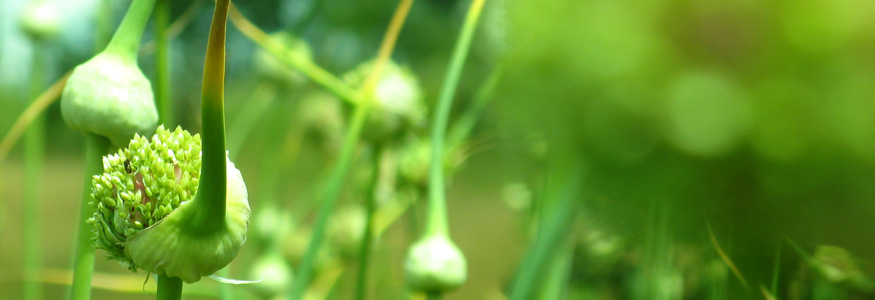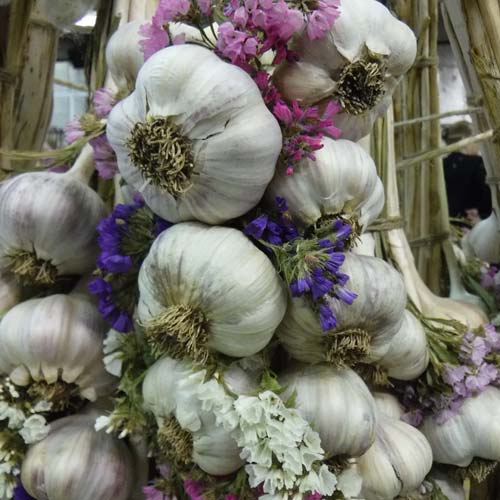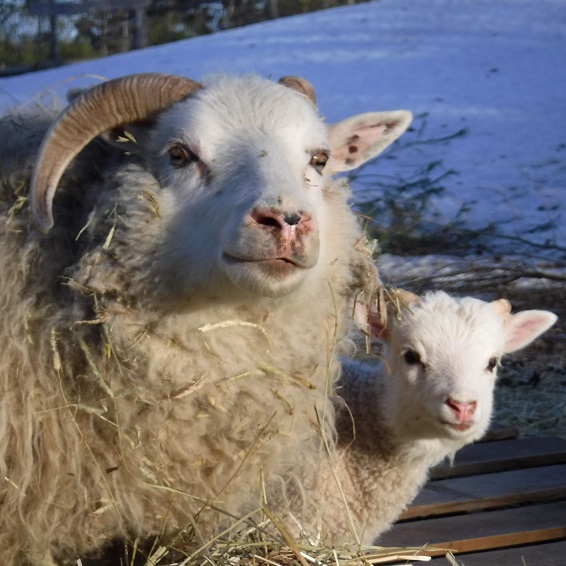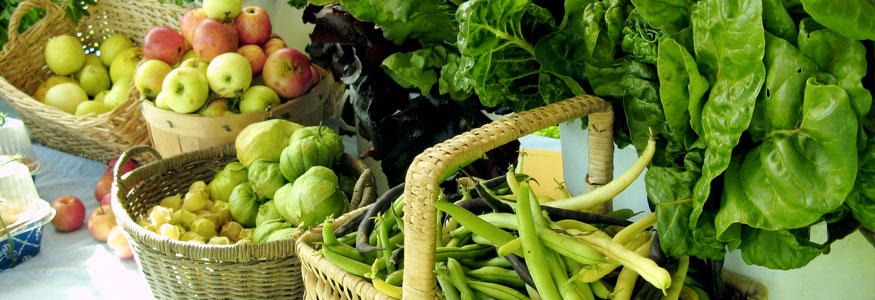
Respect for local ecology and a willingness to co-operate with nature are the basic principles of Thistlecroft. We are human beings and have human ways of doing the things of human objective, but we try to avoid dominating nature in the process.
Gardens at Thistlecroft are cultivated by hand, using low tech methods. We have a small Kubota tractor that we sometimes use to reshape garden beds or break dense patches of grass. It has been of incredible assistance when moving heavy awkward loads. Someday we hope to train Banjo the Donkey to pull a load, but until then we rely on wheelbarrows, hand-tools and our own physical labour.
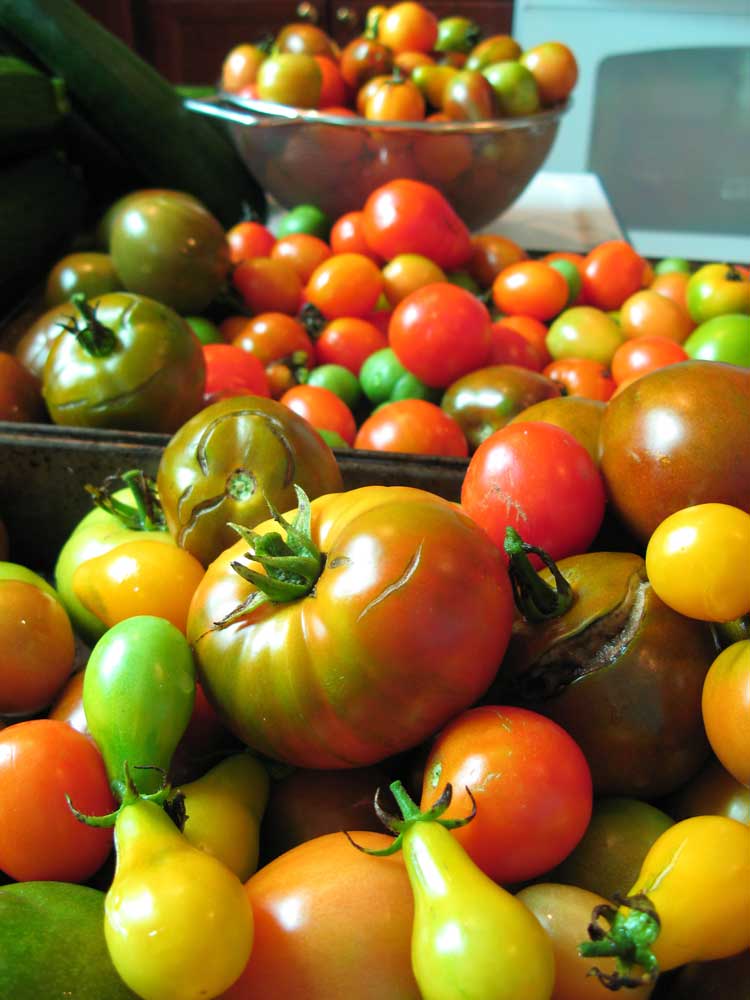
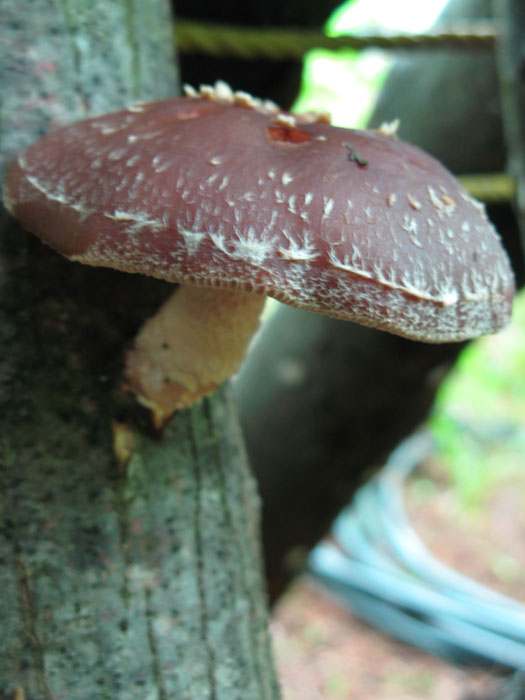
We use home-made compost to fertilize the soil (composted chicken, sheep and donkey manure), and brew home-made herbal teas to encourage the plants to thrive. It takes many years to build healthy, fertile soil and only one season to deplete it. We judge our soil health based upon how well our plants grow, and also by what types of weeds are growing in the area. While we don't use chemical or pre-manufactured products in our gardens, we do amend the soil with natural products, such as coffee grinds and tea leaves, citrus peels, crushed eggshells, and wood ash.
We also plant things strategically, one year planting beans (which naturally capture air-born nitrogen and transform it into an earth based nitrogen), for the benefit of plants the following year. We expect soil health and fertility to fluctuate from year to year, but our aim is to steadily increase the richness and diversity of the soil, making the earth in our area a more suitable home for a wider variety of vegetables.

For disease control, we rotate our garden beds and crops on a 3-4 year cycle, incorporate companion plants to encourage healthier growth and repel pests, and practice field hygiene by disposing of diseased or afflicted plant matter by burning it, excluding all parts from our usual waste-recovery system.
There are organic products on the market to help with disease, moulds, and insects but we value co-operation with nature, rather than a dominance or obliteration of nature. Some problems aren't really problems, and make no difference to the end products. Especially when it comes to insects, most are a normal and vital part of ecology, and they do little more than aesthetic damages. Other pests, such as garlic leek moth, we must respond to quickly, knowing from experience that the damages can be devastating.
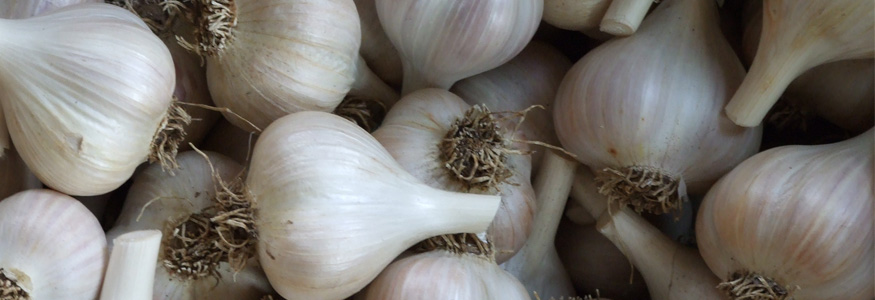
Our land grows exceptional garlic! We grow four different cultivars - Rocambole, Bogatyr, Duganski and Sakura. We grow without any chemical or synthetic products.
We sell Cured Garlic in the fall, Garlic Scapes in early-summer and Fresh Garlic (uncured garlic) is available in by mid-summer.
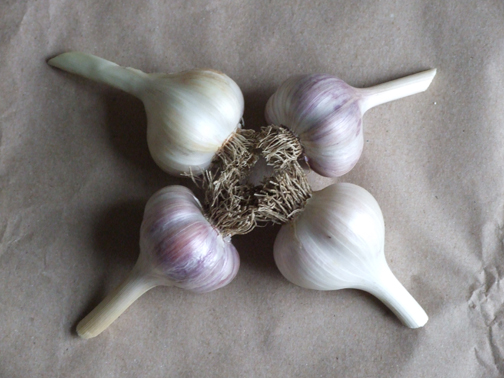
Rocambole
Rocambole are one of the most widely grown hardneck cultivars. Their outer skin is white with some purple stripping on the inner skins. Rocamboles are a sweet tasting garlic. They are not overtly sulfurous and its flavour is often deep and rich. It is an ideal garlic for fresh, raw use such as crushed into a salad dressing.
The Rocamboles that we grow tend to be on the smaller size but they feature many cloves and they store very well.
Bogatyr
Bogatyr is a variety of the subgroup of 'Marbled Purple Stripe' cultivars. The subgroup's name describes its main colouration. This variety comes from an area around Moscow and was further developed at the Gatersleben Seed Bank in eastern Germany.
Bogatyr stores very well and features large cloves that are easy to peel. When raw, it is very hot and when sauteed, their flavour can be described as "sulfurously garlicky".
Duganski
Duganski is a variety of the 'Purple Stripe' cultivars. This cultivar is genetically closest to the origin of the species and is considered the ancestor of all other garlic cultivars.
Their colouration on the skins features purple stripes and their cloves exhibit a distinctive 'beak' or elongated tip. We find that they likewise, store very well. Duganski is not as sweet as Rocamboles but not as sulfurous as Bogatyr. They are ideal for roasting. They also sweeten in flavour as they age.
Sakura
Sakura is our Asiatic cultivar of garlic that we grow on our farm. What makes Asiatics distinctive are their umbel capsule which grows close to the stem and produces two to six large bulbils within them (which you can eat).
Sakura is originally from Japan (by way of western Washington State) and features an off-white skin with a thick, tan coloured inner skin. As for flavour, Sakura is the mildest garlic that we grow and they store relatively well.
Our garlic is planted in the fall. They over-winter in the ground and break through the mulch once the spring-time conditions are right. During the year, we will weed as necessary. Come mid-summer, we harvest half of the scapes. We leave the other half to develop further into bulbils which we feed to our animals later in the year.
In the late summer, once about 60% of the leaves have turned yellow, it is time to harvest the garlic. We gently pull the whole plants from the ground, tie them into groups of ten, and hang them from the rafters in our drying loft to cure for about a month.
The process of curing garlic is to preserve it for use and to deepen the flavour for taste. By properly drying garlic, we can reduce the risk for mould. Once cured, the garlic is ready for storage and eating. At this point, we trim the leaves and stalks, clean the bulbs and separate those for planting from those for eating.
We recommend storing garlic in a cool, dark and dry place. Do not store them in the fridge or freezer. We store ours in our cellar and under the right conditions, we find that it will keep plump well until April! At this point, the bulbs often exhibit root development and a green shoot appears on each clove. The garlic is still safe to eat but we find that it is now more sweet than hot.
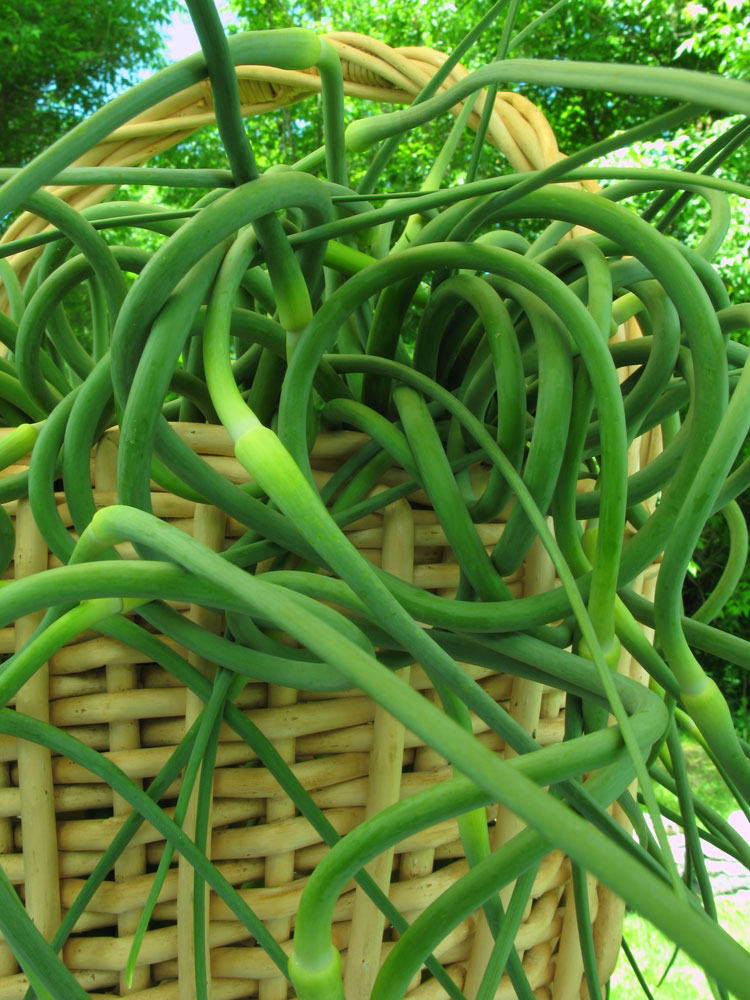
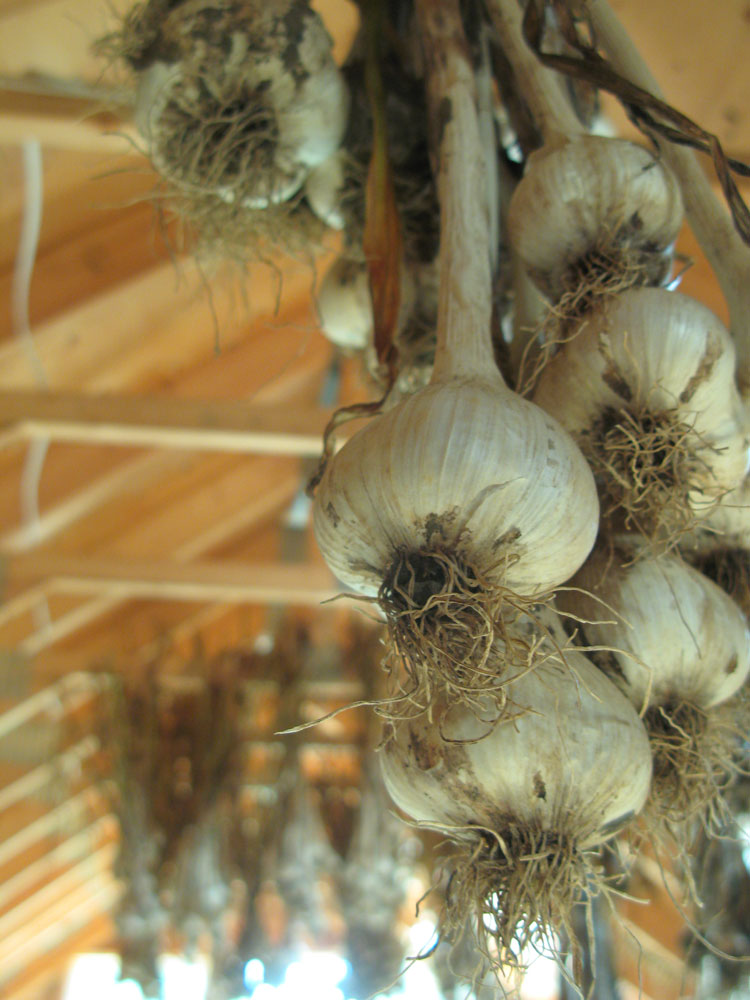
Garlic Scapes appear on hardneck varieties of garlic. They are the initial developments of the garlic flower. They start as a spear-like development which starts to curl. Over time, the scape will uncurl and start to straighten and reach a height of up to 7 feet! As an edible product, scapes are harvested at their first curl. At this point, the 'beak' portion of the curl is still edible (it gets woodier as it matures).
To eat the scapes, first you must trim them from their woodier parts. To do this, treat them similar to asparagus - feel for where the stem stiffens. Snap or cut off this part. We also suggest trimming the tip as this is also woody. You can use the scapes similar to other greens such as broccoli and asparagus. They can be fried in butter and served as a dish or chopped finely as a compliment or garnish. They are not a good substitute for garlic cloves, but do impart a slightly garlicy flavour to any dish.
Bulbils are the tiny cloves or bulbs found in the umbel of the scape. The umbel is the large bulbus head that makes up the tip of the scape on most hardneck cultivars. Inside this umbel are the garlic flowers and bulbils. Bulbils are asexual propagules. They can be planted into the ground and will eventually grow into a 'normal' garlic over a few seasons.
Bulbils vary in size and shape with some varieties exhibiting 100s of bulbils to the Asiatic varieties which sometimes only produce two bulbils (which when planted will produce a 'normal' garlic bulb in one season).
